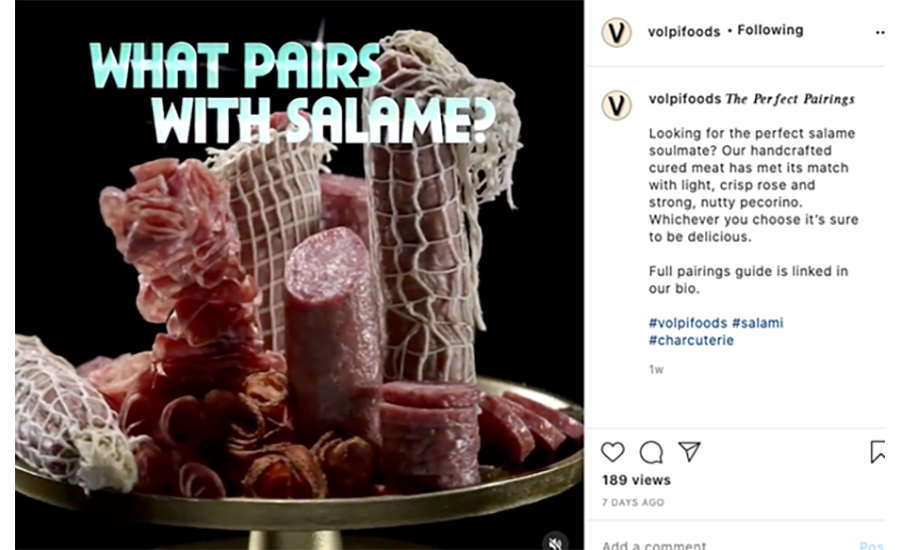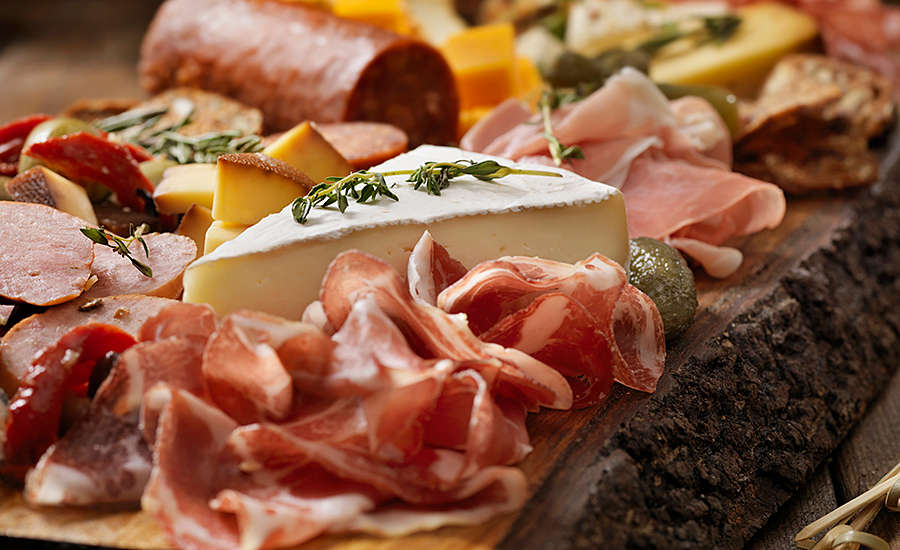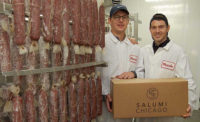When you think of a fine charcuterie tray, you may envision a fancy Italian restaurant, a wooden board covered with sliced meats and various cheeses, perhaps served with a glass of wine. You can still find it there, of course. But these days, you are just as likely to find a charcuterie serving in a retail plastic tray with cheddar cheese crumbles and dried cranberries – an adult version of a children’s lunch kit.
With the meat snack market continuing to grow, it should come as no surprise that the original meat snack would gain a foothold in the sector as well. Charcuterie is a term to describe a variety of dry-cured meats – salami, coppa, prosciutto, sopressata, just to name a few. Its origins go back to European master butchers, and the sight of a hanging prosciutto ham or a stick of salami still evokes visions of an artisan at work.
Of course, not even the most forward-thinking Old World salami maker would have envisioned what 21st-Century culture would do with the product. Are you tired of gingerbread houses in the winter? How about making a “charcuterie chalet”? Seriously, Google it. Children even can play with a Fisher-Price® “Snacks for Two” playset that comes with a plastic cutting board, cheese wheel, salami and fruit. While some meat traditionalists may cringe at the thought, what these modern-day adaptations have done is take the formality – some might even say stuffiness – out of the charcuterie tray. It’s not just something you would find at a fancy dinner; it’s something you can make for family or friends as an evening snack or weekend treat.
As appreciation for dry-cured meats has expanded, many of the leading processors have expanded their offerings to satisfy consumers. Volpi Foods has been producing fine dry-cured specialties for more than 115 years. The company, based in St. Louis, has kept its time-honored traditions while still releasing new products that meet the needs and prices of today’s consumers.

Volpi Foods has found that social media is an excellent way to promote its products and reach new consumers.
“Volpi’s growth is driven by a couple of factors but ultimately, we’ve been able to expand the charcuterie consumer audience. Shoppers are now able to find these products more readily in their local grocery stores, and Volpi has also focused in on reducing barriers that held most consumers back from splurging on a package of prosciutto or salame,” said Deanna Depke, marketing manager.
Some of Volpi’s recent products releases include Small Bites, which are 1.5-ounce portions of some of the company’s favorite products. They are priced at $2.99 and allow newcomers the chance to explore different charcuterie products without breaking the bank, explains Depke.
“Likewise, our Roltini Singles take classic flavor pairings like Prosciutto and Mozzarella and roll them up into one convenient, single-serving handheld package available at convenience and grocery stores alike,” she adds. “No matter the format we’re serving our products in, Roltini Singles, Small Bites, etc., we make our products the same slow way we’ve made them for over four generations, leading to better tasting slices and more enjoyable meals.”
Volpi is also using some cutting edge marketing techniques to reach out to charcuterie-curious consumers. The company launched a video series called “Volpi Classics” that was later honored by the Webby awards as one of the food and beverage industry’s top social videos. The company followed it up with a “Perfect Pairings” series of 10 videos on Instagram. The videos encourage viewers to explore unique product pairings with everything from cocktails to experiences, the company said. Pairing topics include: Bloody Mary pairings, hard cider pairings, martini pairings, Negroni pairings and more as well as pairings for popular cured meats from bresaola, mortadella, coppa, prosciutto, salame and more.
“Now more than ever, digital media is a key component to communicating with our customers. We have been focused on digital for years with the creation of our Volpi Test Kitchen recipe series and have found it is a great tool to engage with our consumers while also getting our name in front of people searching for ‘charcuterie boards’ for the first time,” Depke notes.
Volpi’s founder, John Volpi, came to the United States from Milan, Italy, in 1898 and started the company in 1902. While the company’s marketing and products development efforts have evolved drastically over the years, the dedication to quality that he instilled in the business is still apparent.
“Really, we’re still making the same products that my grandfather and great uncle (our founder) would be proud to serve at their homes,” Depke says.

Volpi’s old-world processes, ironically, fit in well with the expectations of the modern-day consumers. The company doesn’t use any fillers or aging accelerants in its products. They are all-natural, contain no synthetic nitrates or nitrites, are gluten free, minimally processed and crafted from responsibly raised meat.
When it comes to processing high-quality dry-cured meats, time is an essential element. Technology can improve the drying room efficiency and the processing quality, but the products still need time to develop their rich flavors. Volpi’s new products are produced with the same traditional methods, even though its audience has broadened considerably.
“Our supply chain team has been able to study order patterns, consumer demand fluctuations and supplier hurdles to create a holistic view of the future, allowing us to ensure our customers will be stocked, even throughout COVID-19,” Depke notes. IP





Report Abusive Comment